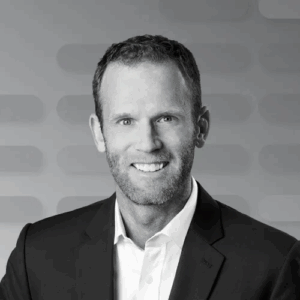Chronic and degenerative diseases continue to place a growing strain on healthcare systems worldwide. While traditional small-molecule and biologic drugs help manage symptoms, they rarely restore lost function. Regenerative medicine, particularly cell therapies that replace or repair damaged cells, is emerging as a promising alternative.
The field is still young but expanding quickly. Analysts valued the global regenerative medicine market at around $32 billion in 2023, with projections indicating it could grow several-fold over the next decade. This trajectory reflects both the rising need for new approaches and the increasing confidence that cell-based treatments may deliver benefits once considered out of reach.
Brian Culley, CEO of Lineage Therapeutics, who has more than 30 years of experience in the biotech industry, is advancing a vision of scalable, allogeneic cell therapies designed to restore function in conditions long thought irreversible.
Xtalks Clinical Edge™: Issue 6 — Supporting Next-Gen Clinical Research to Advance Therapies
Xtalks Clinical Edge™ is a magazine for clinical research professionals and all who want to be informed about the latest trends and happenings in clinical trials. This magazine immerses you in a world where industry leaders, patient advocates and top researchers converge to provide the most insightful perspectives on clinical trials.
Since joining Lineage in 2018, he has led the company in developing scalable, off-the-shelf cell replacement therapies, aimed at addressing diseases previously thought impossible to reverse.

CEO
Lineage Cell Therapeutics, Inc.
In this Xtalks Clinical Edge interview, Brian shares how Lineage is navigating the complexities of manufacturing, building strategic partnerships and expanding its pipeline, all while preparing for what he believes could become an important new branch of medicine.
Why In-House Manufacturing Matters
Manufacturing living cells introduces challenges that small-molecule drugs never encounter. Outsourcing production may be feasible for pills or biologics, but Brian believes it falls short for cell therapies.
“To me, owning and managing your own facility is almost a necessity,” he said. He acknowledged that contract development and manufacturing organizations (CDMOs) might disagree, but argued that cell therapy is “a very difficult thing to commoditize.” Unlike small molecules, he explained, you can’t simply “send it down the road with a check and say, ‘please deliver my drug’.”
Because quality depends on the intellectual property, innovation and expertise of the team, having a dedicated in-house group ensures ownership and continuity. Discoveries made in one program can also be transferred to others, creating a multiplier effect. Brian admitted the upfront costs are high, but believes the long-term advantages outweigh them.
– Brian Culley, CEO, Lineage Cell Therapeutics
Overcoming Barriers to Scalability
Autologous therapies, which are custom-made for each patient from their own cells, are costly but sometimes can be justified in oncology, where the stakes are life-or-death. For other conditions, Brian noted, charging $500,000 or more per patient would be unreasonable. That is why Lineage focuses only on allogeneic therapies, derived from pluripotent stem cells that can serve many patients.
He compared the approach to buying groceries: “It’s the same medicine every time, for every customer. Just like when you go down to the store, by and large, everyone buys the same carton of milk, rather than each of us owning a cow.”
Pluripotent stem cells are self-renewing, enabling large-scale, low-cost production. But reproducibility is still a hurdle. “Some cell lines just do not behave very well. They begin to spontaneously differentiate, and that’s a real problem,” Brian said.
Through practice and innovation, however, Lineage has developed techniques to stabilize these lines and produce consistent results.
Purity is equally critical. As Brian put it: “For our retina program, our investigational allogeneic cell therapy, we can manufacture about 3000 clinical courses in a 3L bioreactor, and we’re manufacturing 99.5% pure RPE [retinal pigment epithelial] cells.”
The Genentech Partnership: A Defining Milestone
A major validation came through Lineage’s $670 million collaboration with Genentech for their lead program, an RPE cell transplant therapy, currently being tested in dry age-related macular degeneration (dry AMD). The deal included a $50 million upfront payment, potential milestones worth $620 million and double-digit royalties.
“We struck a high-value deal while the lead program was still in Phase I, and it was a cell therapy. I think cell therapy is having a bit of a coming of age,” Brian said.
Beyond the economics, the collaboration provides access to Genentech’s development expertise and Roche’s commercialization infrastructure. “Roche is one of the world leaders in ophthalmology,” he added. With our manufacturing platform, Genentech funding the clinical trials and Roche handling commercialization, the program benefits from a vertical alignment that Lineage could not achieve on its own.
Brian also pointed out that after years of failures in the field, a visible success could change perceptions: if Lineage’s approach can lead to a multi-billion-dollar product built on a “replace and restore” approach, it could inspire confidence and replication across regenerative medicine.
Vision Gains in Dry AMD
Dry AMD has long been considered irreversible. “It is referred to in the textbooks as being an irreversible disease because you only get worse with time,” Brian explained. Patients progressively lose RPE cells, and the damage is permanent.
The data reported by Roche and Genentech this past June with the investigational allogeneic cell therapy challenges that assumption. “After a single surgical procedure which takes about 30 minutes of transplanting the cells to the back of the eye, we were able to increase vision in a handful of patients. And that increase in vision has lasted out now to three years. And that’s unprecedented in this disease.”
The results showed not only functional improvements but also structural restoration. “The anatomical structure of the eye was improved, and again, that persisted for three years,” Brian said. He acknowledged the sample size is small, but stressed that spontaneous recovery is unheard of in this disease. With four independent groups — led by Roche and Genentech and Lineage — reporting vision gains, evidence for the approach is building.
Expanding Beyond Ophthalmology
Encouraged by its success in ophthalmology, Lineage has extended its replace-and-restore model into other conditions where cell loss drives disability.
In spinal cord injury, the aim is to replace cells destroyed by trauma. “These are individuals that suffer accidents, typically car accidents or maybe sports or biking accidents. And when the spinal cord is damaged, you no longer have the ability to use your muscles. And so, quadriplegia can occur following a spinal cord injury,” Brian said. The company hopes functional cell replacement could restore mobility.
In audiology, Lineage is manufacturing auditory neurons. “This is the second line of cells in your ear after the hair cells that are picking up the vibrations, those hair cells hand off vibrations. So, the auditory neuron, which passes it ultimately into the brain so that you can make sense of the sounds that you’re hearing,” he explained. Losing these neurons leads to hearing impairment, and replacing them could preserve or improve hearing.
The company recently secured $12 million in funding for its hearing loss program and announced plans to expand into diabetes. “It’s already been shown if you can transplant islet cells to someone who has severe diabetes, that that can be curative,” Brian said.
– Brian Culley, CEO, Lineage Cell Therapeutics
Where Breakthroughs Are Likely Next
Looking at the next five years, Brian sees regenerative medicine poised for breakthroughs in several areas. Dry AMD remains the most advanced opportunity, but he notes diabetes and Parkinson’s are also compelling areas where proof of concept has been established.
In Parkinson’s disease, he explained, “They’re using dopaminergic neurons. So you’ve got the one area of the brain in Parkinson’s, it’s called the substantia nigra [a brain region that helps control movement], where a certain number of these cells die off. If you can manufacture them in the lab and deliver them to that location, you may be able to essentially reverse that condition or at least halt its progression.”
Lineage is also exploring other opportunities, which currently remain undisclosed for competitive reasons, but Brian suggested that a handful of attractive conditions could soon demonstrate results that surpass traditional small molecules or antibodies.
“I think what we are basically going to see is an explosion in this area, it’s a new branch of medicine. I think we’re going to see an explosion in the cell transplantation, in the replace and restore approach.”
Lessons in Leadership and Long-Term Vision
As a leader, balancing scientific ambition with financial reality is the sobering sentiment Brian reflected on.
“At the end of the day, no matter how great your ideas are, you really can only do what there’s funding available for,” he said. Even the best ideas, he added, will not advance without capital. Early successes are important to keep programs moving and to maintain investor confidence.
Looking five years ahead, Brian hopes Lineage can leverage momentum from its retina program to accelerate other initiatives. “If we’re still an independent company five years out, I would really hope that we would have somewhere in the neighborhood of 10 or 12 really excellent ideas, all based on our platform technology, moving into, toward or through clinical testing.”
The company’s long-term vision is to refine therapies that replace the specific cells lost in disease, rather than relying on generic stem cells.
Cell replacement therapies are beginning to show results once thought impossible, from vision restoration in dry AMD to early signals in neurology, hearing loss and metabolic disease. For Brian, the focus is not just on one therapy, but on building a platform capable of consistent, scalable cell replacement across conditions.
This interview reflects on Lineage’s efforts to address manufacturing hurdles and durability in patients, situating these advances within the broader progress of regenerative medicine.












Join or login to leave a comment
JOIN LOGIN